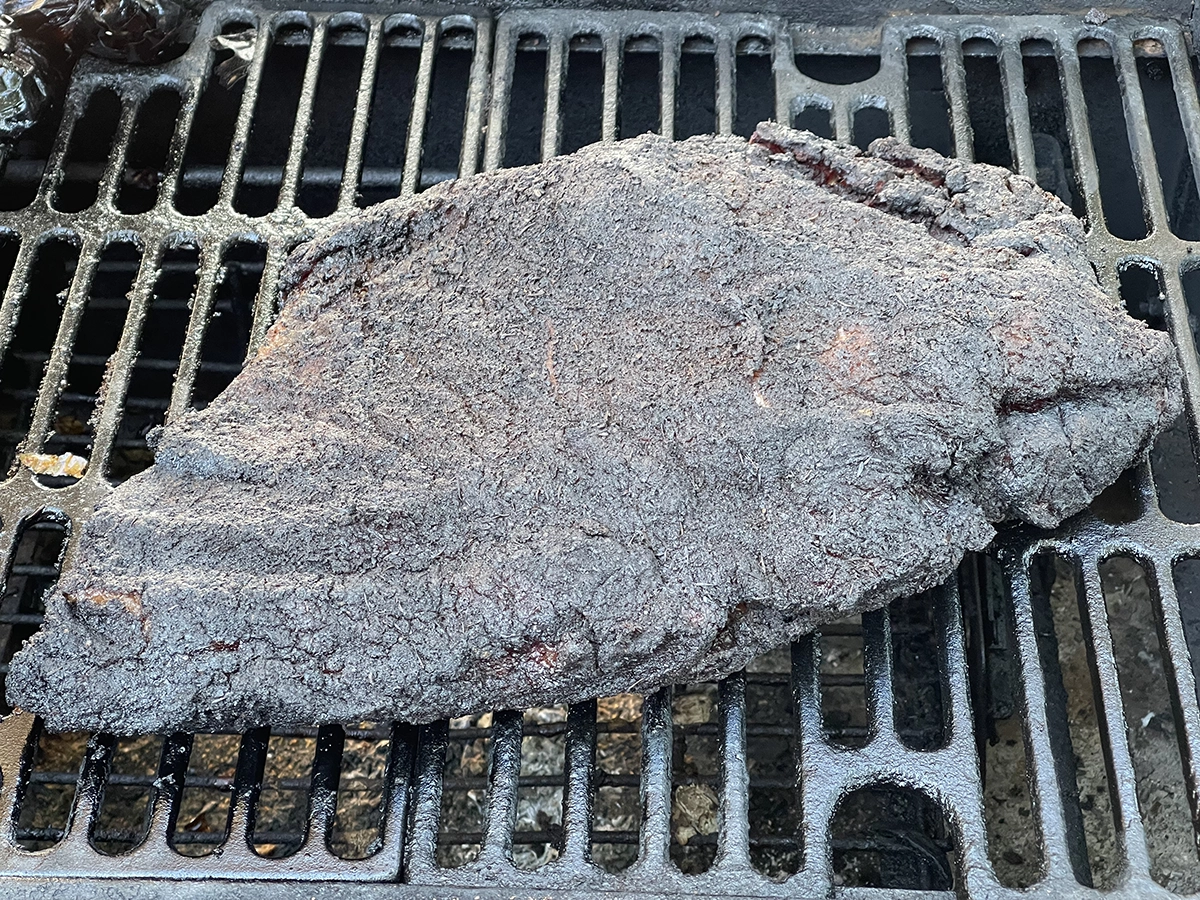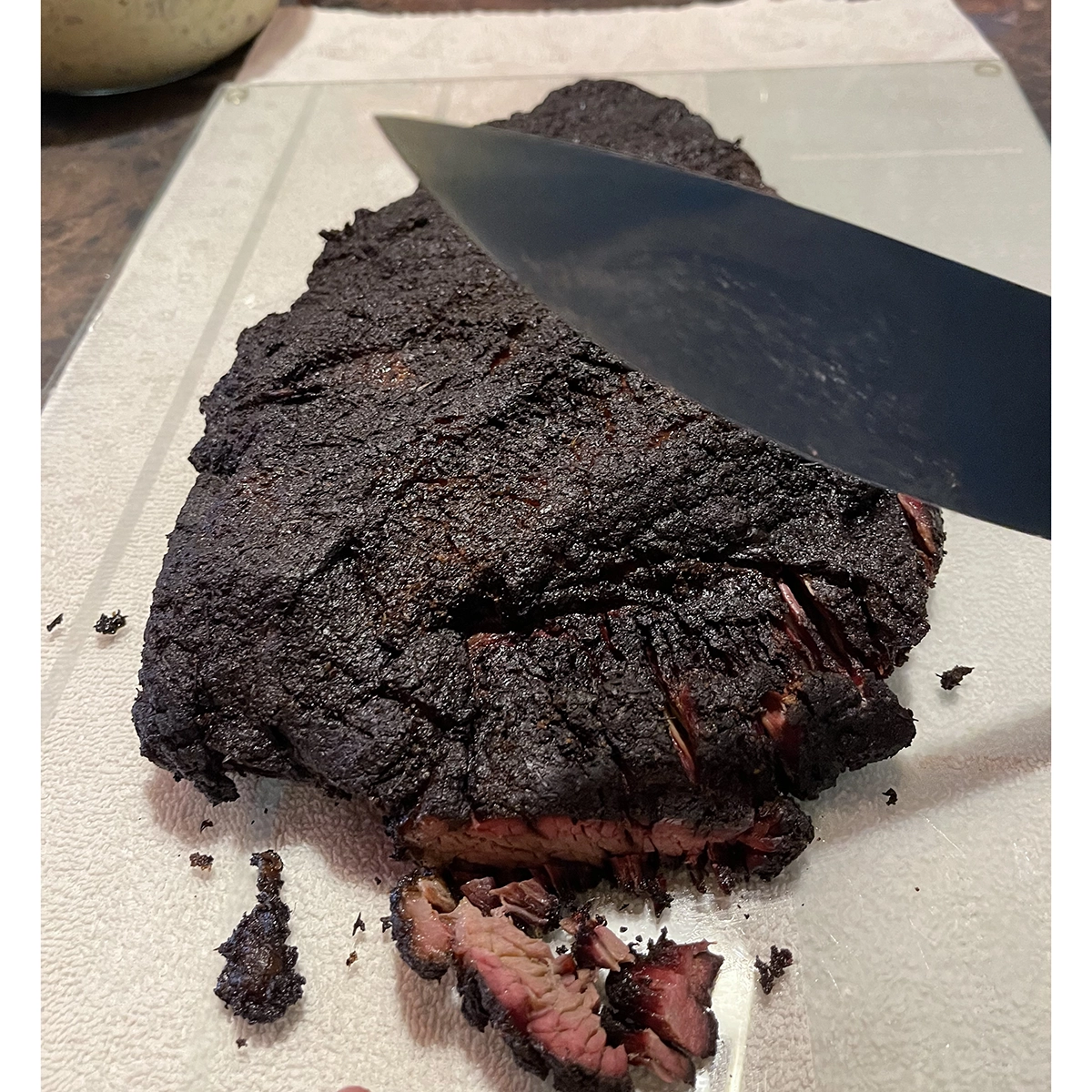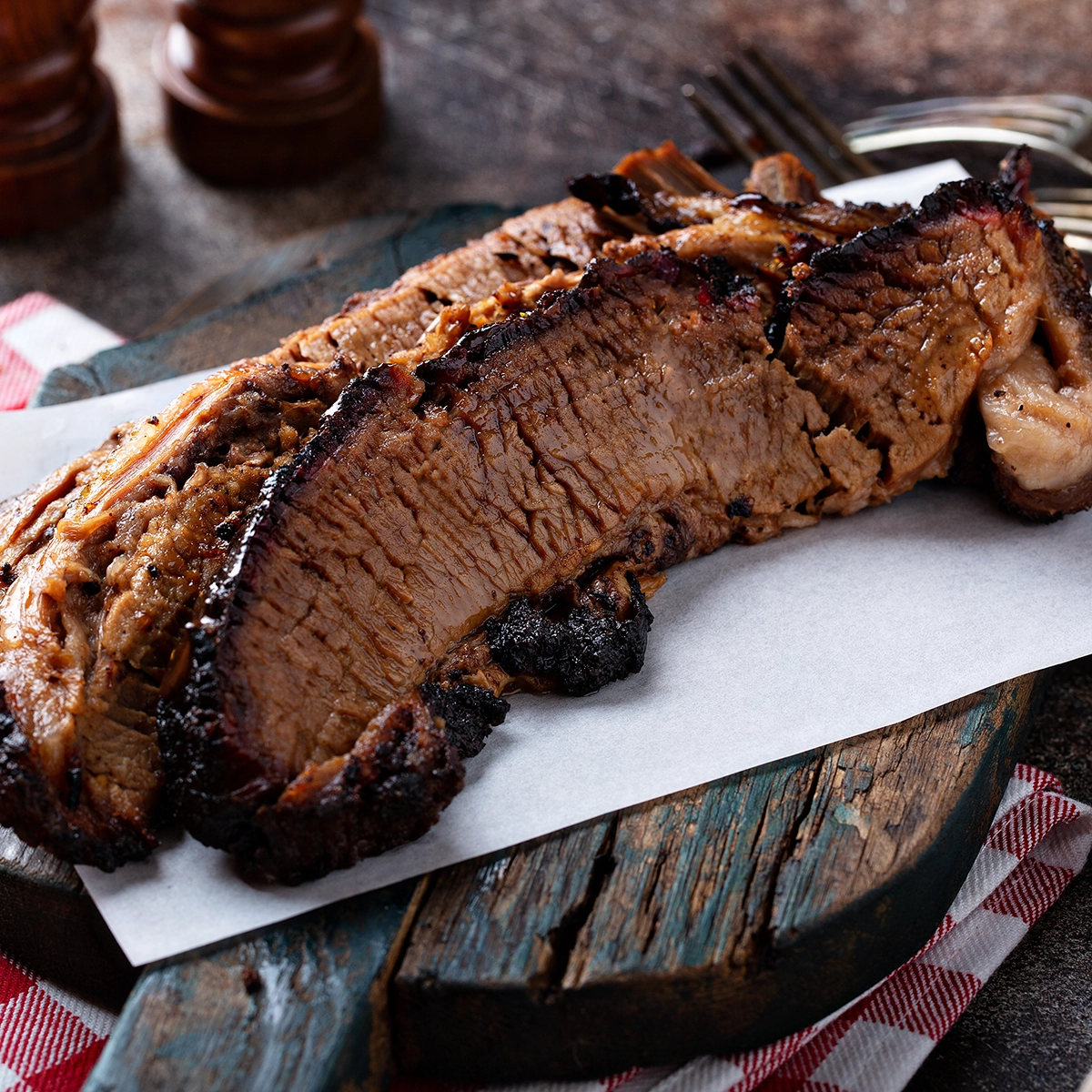Backyard Brisket Texas-Style satisfies a hearty appetite with just the right balance of spice, seasoning, and slow cooking. Our backyard chef’s secret guide to smoked Texas-Style brisket means you can make tender brisket that’s juicy and full of flavor. Follow our guide for the perfect backyard beef brisket!
Get ready to fire up the BBQ and make the perfect Texas-style beef brisket! Our step-by-step guide helps you learn the ‘art’ of how to prepare tender, slow-cooked, juicy brisket with lots of flavors. Make restaurant-quality Texas-style beef brisket right in your own backyard! This recipe offers all the tips and tricks that’ll have you cooking like a pro. Learn how to smoke, rub, and finish your brisket for mouthwatering perfection.
Our First Secret Tip to Perfect Backyard Brisket Texas-Style
Choose the Right Cuts
When buying a pack of beef brisket, make sure to look for one that is evenly shaped and has an ample amount of fat (fat cap) for flavor. Make sure to pick up an untrimmed cut that will have more fat than the trimmed version, as this will bring out the flavor and give you some extra time to trim it yourself!
Prep the Dry Rub
Texas-style BBQ is all about the brisket, and the key to a perfect brisket is building a thick bark. This bark is created by applying a dry rub to the meat before cooking, which helps to seal in the juices and create a delicious crust. When done correctly, a Texas-style brisket should have a black or charred ‘bark’ appearance, indicating that it has been cooked to perfection.
Give your brisket a nice flavor boost with a simple homemade dry rub recipe! Simply combine equal parts garlic powder, onion powder, paprika, sea salt, freshly ground pepper, and cayenne pepper in a bowl and mix together until evenly combined. If you have a favorite rub by all means use it!

Texas-Style Brisket should have a Black or Charred ‘Bark’
Learn the ‘Art’ of making Texas-Style Beef Brisket!
Step One: Get the Beef Brisket Ready
Trim and rub with spices. Once you’ve selected your beef brisket, it’s important to trim the fat cap properly before cooking Texas-style beef brisket. Start by cutting off any large chunks of visible fat or gristle, then follow up by using a sharp knife or kitchen scissors to cut away any remaining pieces that could potentially diminish the flavor. Trim the fat side of the brisket to leave ¼ – ½ inch of fat. If the brisket has a membrane, usually slightly silver in color, make sure it is completely removed as well.
Pat the brisket dry with paper towels and add the rub using your fingers to spread over both sides of the brisket until evenly coated on top and bottom. Use a generous amount of spice mix, such as garlic powder, paprika, onion powder, black pepper, cumin, or chili powder rubbing into both sides of the cut. Some famous BBQ aficionados say to only use salt and pepper. I have used this method as well and whichever method you use should be to your taste. Both taste equally good to me, however sometimes I like the rub as it gives the meat more of a finished bark-type crust which is especially nice if you like to make burnt-end brisket sandwiches with your leftover smoked brisket.
Allow the rubbed beef to rest in the fridge, uncovered or covered if you prefer overnight. This allows the spices to really penetrate the meat, resulting in maximum flavor when cooked.
Step Two: Fire Up The BBQ: Heat up your smoker or oven to a consistently low temperature.
Get your smoker, oven, or charcoal grill ready – you want a low, consistent temperature between 250 and 300 degrees Celsius. Make sure to give yourself enough time for the heat to stabilize before proceeding to the next step. Most experts agree that traditional Texas-style brisket is best cooked around 250 – 275 degrees Fahrenheit over indirect heat, for about 1 hour and 15 – 30 minutes per pound of meat. The lower and slower you cook your brisket, the juicier it will be when served!
We smoked our brisket uncovered for 3 hours and then wrapped it in foil and smoked covered for 7 hours. We then unwrapped it and continued to the final smoke for 30 more minutes. Some suggest this to include the resting period however we continue to ‘rest’ the cooked brisket, again wrapping it in foil after removing it from the grill.
We cooked ours at 250 F for a total of 10 hours. Low and slow cooking time allows virtually all of its inner juices to be cooked right in, leading to maximum flavor and tenderness when it’s ready to eat!

The Key to a Perfect Texas Brisket is Building a Thick Bark
Step 3: Add Wood For Flavor: Choose your favorite wood smoke for additional flavorings.
Texas-style brisket pairs excellently with wood smoke, whether it’s mesquite, hickory, oak, applewood, or pecan. You can choose your favorite and add it to the charcoal or chips in your smoker for an extra dimension of flavor. Use a light hand so as not to overpower the dish with a smokey flavor – a little goes a long way!
We cooked ours with only mesquite wood, which is my personal favorite. However, combinations work depending on what you have on hand or what is available. There is plenty of wood in Texas and many of our Texas BBQ joints use oak, while some use pecan or mesquite, both of which are plentiful in the Lone Star State. I save the fallen pecan limbs from my backyard pecan tree just for such occasions. If you live in a Texas rural area many farmers and ranchers will give you their mesquite if you chop it down for them.
Step 4: Quality Utensils Are Key: Use long grilling tools like tongs and pliers to turn brisket as needed.
Always use clean utensils when turning or transferring the brisket. Any bits that might fall off during the process can damage the flavor and texture of your dish. Make sure to choose grilling tools and tongs with long handles – this will protect your hands from any hot surfaces, even if you’re working close to a hot wood smoker or open flame. Also, some oven-proof hand mitts or gloves come in handy.
Step 5: Patience is a Virtue: Let brisket cook slowly until it is tender enough to shred!
To ensure you get the same tender, juicy, smoky brisket every time, it’s important to cook your brisket slowly and patiently. Always keep the temperature at a consistent, steady temperature. You may need to adjust this time based on the size and thickness of your cut – some briskets will require longer cooking time than others.
Beef brisket cooks best when wrapped in foil during its ‘resting period” after smoking. Once your meat is done smoking, transfer it onto a piece of foil that’s larger than it so there is enough space for later wrapping up completely without any part exposed. Add some liquid like apple cider vinegar (optional) and wrap tightly with two layers. The top layer of foil should face towards the skin side of the brisket first, just in case there are any tears within the foil due to stretching as no one wants raw juice leaking out from side gaps! The bottom layer of foil is then wrapped around the brisket.

Let Brisket Rest in Foil Before Serving for a Succulent Juicy Brisket Texas-Style!
Step Six: Let it Rest for the Best Backyard Brisket Texas-Style
There are a few reasons why it is important to let the brisket rest before serving it. When meat is cooked, the juices inside will be hot and will be distributed throughout the meat. If you cut into the meat right away, these hot juices will flow out and the meat will be dry. Allowing the meat to rest gives the juices a chance to redistribute throughout the meat, which will make it moister and more flavorful.
Another reason to let the brisket rest is that it gives the muscle fibers a chance to relax and become more tender. When meat is cooked, the muscle fibers contract and become tough. Allowing the meat to rest allows the fibers to relax, which can make the meat more tender. We suggest a waiting period of approximately 30 minutes however, you can go longer depending on your serving time.
Finally, letting the meat rest allows the flavors to meld and intensify. This is particularly important for smoked or grilled brisket, as the flavors from the smoke or grill will have a chance to penetrate the meat and give it more depth of flavor.
In general, it is best to let the beef brisket rest for at least 15-30 minutes, or longer if possible. We let ours rest for a waiting period of approximately 30 minutes. This will allow the juices to redistribute and the muscle fibers to relax, resulting in a more tender and flavorful finished product.
In Conclusion, Backyard Brisket Texas-Style
In conclusion, nothing satisfies a hearty appetite quite like a good ole’ Backyard Brisket Texas-Style. With just the right balance of spice, seasoning, and slow cooking, you can make tender brisket that’s juicy and full of flavor. Follow our guide for the perfect beef brisket!
Moving to Texas, read about brisket camp here.
Read more about Texas cooking here.
Austin Texas barbecue barbeque bbq cities in texas cost of living in texas cost of living texas cost to live in texas foods from Texas Foods in Texas friendly people google abandoned texas google texas county google texas news google texas roadhouse google texas weather leading texas lifestyle brand life in texas lifestyle brand living cost texas living in Texas living texas local texas moving to texas San Antonio Texas Space X Texas Texas BBQ Texas Chili texas cooking texas cost of living texas culture texas food Texas Hill Country Texas Life Texas Lifestyle Texas life style texas lifestyle brand Texas Lifestyle influencer texas live Texas living texas living cost Texini the leading Texas lifestyle brand texmex Tex Mex
Barbecue is the most iconic food in Texas. Texas barbecue is known for its slow-cooked meats, such as brisket, ribs, and sausage. Barbecue is a style of cooking meat that originated in Texas, and it’s still one of the most popular ways to eat meat in the state. There are many different styles of barbecue in Texas, but they all have one thing in common: they’re all cooked over a slow fire, which gives the meat a smoky, flavorful taste.
Recent Posts
Indulge in the unexpected with our Dr Pepper Cake, a moist and rich chocolate confection that harnesses the unique flavors of everyone's favorite soda. This isn't your average chocolate cake – it's...
Texas Foods, Texas is synonymous with BBQ, Tex-Mex, and chili, as well as other dishes. Texas food is a melting pot of our diverse cultures, and we take pride in our so-called Lone Star concoctions...



